How Do Journalists Conduct Research And Verify Information For Investigative Stories?
As an experienced journalist with years of experience in investigative reporting, I am here to provide insight into the critical steps involved in conducting research and verifying information for investigative stories.
It is essential for journalists to not only have the skills and knowledge to uncover the truth, but also to be able to verify the accuracy of the information they have found.
By understanding the complexities of research and verification processes, reporters can ensure their stories are based on reliable information and are accurate and trustworthy.
In this article, I will share the strategies and tips I have used to research and verify information for my investigative stories.
A. Definition of Investigative Journalism
Investigative journalism is defined as a specialized form of journalism that involves in-depth research and reporting to uncover the truth on a given subject.
It is a type of journalism that seeks out and uncovers information that is not readily available to the public.
Investigative journalism often involves investigative techniques such as document analysis, interviews, undercover investigations and data analysis. It can involve uncovering hidden or obscured facts and events that are meant to be kept secret.
Investigative journalism is an important part of a free society and is essential for uncovering important facts, issues, and events that the public should know about.
It is also a tool used to hold those in power accountable and to expose corruption and other wrongdoing.
Investigative journalism can often be difficult, dangerous and time consuming, but with commitment and dedication it can provide invaluable information to the public.
B. Overview of the Research and Verification Process
Research and verification are the foundations of any investigative story. To ensure accuracy and validity, journalists must take a systematic approach to research and verification.
The research and verification process involves a number of steps, including:
1. Identifying and Investigating Sources: The first step is to identify and investigate potential sources. This may include individuals, organizations, databases, documents, and other sources of information.
Journalists should look for sources that can provide the most accurate, reliable, and relevant information.
2. Researching and Analyzing Data: Once sources have been identified, journalists should research and analyze the data they have gathered. This includes examining documents and other records, conducting interviews, and observing events.
The goal is to uncover patterns and establish connections between events, people, and organizations.
3. Verifying Information: Journalists must take steps to verify the accuracy of the information they have gathered. This involves fact-checking and corroborating sources. It is also important to check for inconsistencies and look for any potential bias or misrepresentation of facts.
4. Connecting the Dots: Once the research and verification process are complete, journalists can begin to piece together the facts and evidence to form a coherent narrative. This requires the journalist to make connections between facts and draw conclusions about the story.
These steps form the basis of a successful research and verification process, and they should be followed diligently by all journalists. Through research and verification, journalists can ensure the accuracy and reliability of their stories and provide readers with reliable, credible information.
Researching Investigative Stories
As an experienced journalist, I believe that researching investigative stories is one of the most important aspects of the job. In order to conduct comprehensive research for an investigative story, it is important to employ a variety of techniques, including interviews, document analysis, and internet searches.
The first step in researching an investigative story is to conduct interviews with relevant sources. Interviews can be used to gain an understanding of the story, as well as to obtain information and quotes that will add credibility to the piece.
It is important to conduct interviews with a variety of sources, including people directly involved in the story, as well as experts who can provide insight and analysis.
In addition to interviews, document analysis can be used to research an investigative story. Documents such as emails, reports, and other records can provide a wealth of information that can be used to support the story.
It is important to verify that the documents are authentic and that they are not being misrepresented.
Finally, conducting internet searches can also be useful when researching an investigative story. Internet searches can be used to find news stories that are related to the topic, as well as to find sources and documents that can be used to support the story. It is important to verify that the information that is found is accurate and reliable.
In summary, researching an investigative story is a critical part of producing an informative and compelling piece.
It is important to use a variety of techniques, including interviews, document analysis, and internet searches, in order to ensure that the story is well-researched and accurately reported.
A. Identifying Sources
One of the most important aspects of conducting research and verifying information for an investigative story is identifying reliable sources.
Experienced journalists know the importance of finding trusted sources who can provide accurate, up-to-date information that can be verified.
When identifying sources, it is important to ask the right questions. Are they an expert in the subject matter? Do they have access to reliable information? Are they willing to provide the necessary documentation to back up their claims? Are they credible and reliable? Knowing the answers to these questions will help journalists find reliable sources who can provide accurate information.
In addition to using traditional sources, such as newspapers and news websites, it is important to consider a range of other sources.
Experienced journalists are aware of the power of social media and how it can be used to find sources. Social media can be a great tool to quickly identify potential sources and build contacts.
Journalists should also consider alternative sources, such as public records and documents, court proceedings, interviews, surveys, and Freedom of Information Act (FOIA) requests. These sources can provide valuable information that can be used to verify the facts of an investigative story.
By asking the right questions and considering a range of sources, experienced journalists can identify reliable sources who can provide accurate and up-to-date information. Doing so will help ensure that investigative stories are based on verified facts.
1. Primary Sources
Primary sources are essential for investigative reporting. As an experienced journalist, I recommend that all investigative journalists begin their research by seeking out primary sources.
Primary sources are original documents, recordings, or testimonies that provide firsthand accounts of events or happenings. These sources are the foundation for any investigative story.
Primary sources can include interviews, court documents, police reports, and other official records. They can also include eyewitness accounts and photographs.
When possible, obtaining primary sources directly from the source is ideal. However, journalists should also use databases, such as LexisNexis, to search for primary sources.
When conducting an interview, it is important to ask open-ended questions that give the interviewee the opportunity to provide more detailed information. Always take notes during an interview and, if possible, record it for future reference.
It is also important for investigative journalists to verify that the primary source is reliable. This can be done by researching the individual’s background and credentials, as well as double-checking the facts they provide.
In conclusion, primary sources are essential for investigative reporting and should be the starting point for any investigation.
As an experienced journalist, I recommend that all investigative journalists obtain primary sources and verify their reliability before proceeding with their investigation.
2. Secondary Sources
Secondary sources are an invaluable tool for investigative journalists, as they can provide key insights into the research process. Secondary sources can be obtained through a variety of methods, including online searches, interviews, and visits to archives.
These sources may include published materials, such as books, magazines, and newspapers, as well as unpublished materials, such as documents, photos, and audio recordings.
When conducting research and verifying information, it is important to consider the reliability of secondary sources. To ensure accuracy, investigative journalists should always seek out sources that are reliable, unbiased, and from reputable sources.
For example, it is important to verify that a source is a reliable, unbiased news outlet and not a blog or website with a political agenda. Additionally, journalists should also take into account the date of the source material, as sources that are too old may not reflect the current situation.
It is also important for journalists to be aware of potential biases in secondary sources. For example, if a source has a political agenda, it is important to consider how this might affect the accuracy of the information.
Additionally, journalists should be aware of any potential conflicts of interest or financial motivations that might influence the source.
Finally, journalists should also consider the context of the secondary sources they are using. It is important to understand how the source relates to the overall research process and to consider how the source material might be interpreted differently by different audiences.
Additionally, journalists should consider how the information in the source might be used to further the investigation and how the information might be used to uncover additional sources.
B. Gathering Information
Gathering information is the most important part of investigative journalism. It is the foundation on which the story is built. As an experienced journalist, I believe that gathering information is a process that requires creativity, persistence, and dedication.
The first step to gathering information is to determine the scope of the story. This includes understanding the subject matter and determining which facts and sources must be collected to tell the story in its entirety.
Once the scope is determined, journalists can begin to identify and collect information from a variety of sources.
These sources may include primary sources such as interviews and surveys, secondary sources such as media reports and documents, and tertiary sources such as web searches and library resources.
Journalists should also consider using public records, Freedom of Information Act requests, and tips from the public.
When gathering information, it is important for journalists to be aware of their ethical responsibilities.
This includes protecting confidential sources, being honest with sources, and avoiding any bias or manipulation. Journalists should also be aware of any legal considerations when gathering information.
Finally, journalists should document their sources, taking note of names, dates, and contact information. This will help journalists to verify and double-check the accuracy of the information they have collected.
By taking the time to carefully gather information, journalists can ensure that their investigative stories are accurate and well-researched.
1. Interviews
As an experienced investigative journalist, I can tell you that interviews are the backbone of any investigative story. Interviews allow you to get first-hand accounts and insights from people who can provide information and context that can’t be found elsewhere.
They can also provide much-needed corroboration of facts and other information.
It’s important to approach interviews with well-planned questions that will help you get the answers you need.
Think about who is the best source of information, and then plan your questions accordingly. Don’t be afraid to ask tough questions, but also be respectful and courteous.
Before each interview, take the time to research the person you’re interviewing. Knowing as much as you can about them will allow you to tailor your questions to get the most out of the interview.
When conducting an interview, be sure to take notes or record the conversation. This will allow you to go back and review any relevant points or quotes that you may have missed.
Finally, make sure to follow up with any sources you’ve interviewed after the story has been published. This will show your sources that you value their contributions and help build trust.
By following these tips and conducting thorough interviews, you’ll be able to gather the information you need to write an accurate and compelling investigative story.
2. Documentary Evidence
Documentary evidence is one of the most valuable resources for investigative journalists. Documentary evidence can come in the form of records, public documents, emails, text messages, photographs, audio recordings, and videos.
It can also include documents that are not public, such as internal memos or emails.
In order to use documentary evidence effectively, investigative journalists must be able to recognize and analyze the evidence. Journalists should ask themselves questions such as: Is this evidence reliable? Is it accurate? Does it support or contradict the story?
When analyzing documentary evidence, it is important to consider the source. If a document was obtained from a reliable source, it is more likely to be accurate and trustworthy.
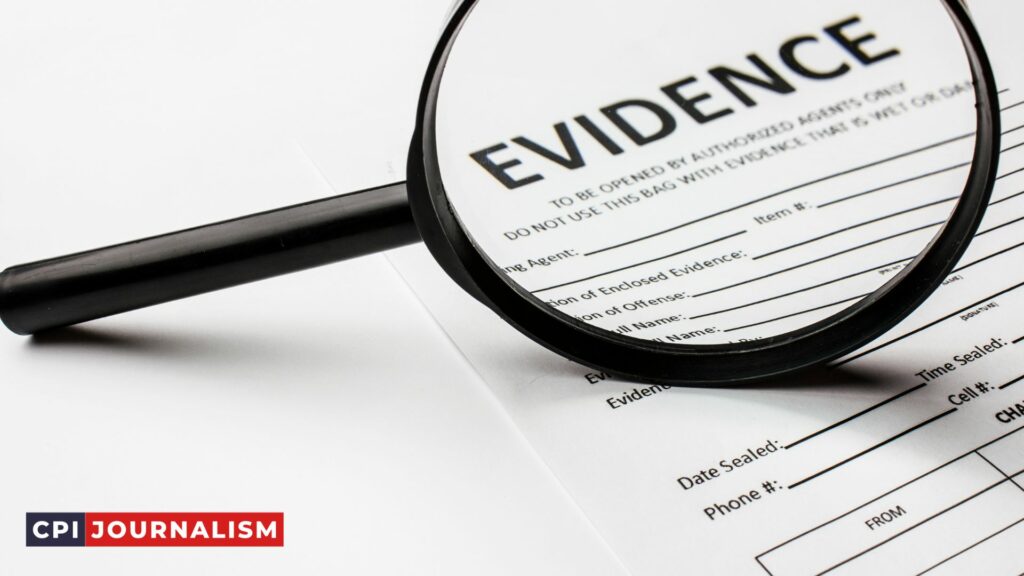
However, if the source is not reliable, it is important to double-check the information. Additionally, journalists should be aware of any potential bias or manipulation.
Another important factor to consider is the context of the document. What is the document’s purpose? Who created it and why? What is the date of the document? All of these questions can help investigative journalists determine the accuracy and reliability of the evidence.
Finally, journalists should also consider the potential legal implications of using a particular document. If a document is confidential or protected by law, journalists should be aware of the potential consequences for publishing or using the document.
Documentary evidence can be a powerful tool for investigative journalism. By carefully analyzing the evidence and considering the potential implications, journalists can ensure that their stories are based on accurate and reliable information.
3. Online Research
For investigative reporters, online research is a crucial tool for gathering information and verifying facts. Going online allows reporters to access vast amounts of data, from public records to social media posts, and conduct research quickly and efficiently.
When conducting online research, reporters should always be vigilant in verifying the accuracy of information. It is important to not take any source at face value, but to verify its accuracy through other reliable sources.
Additionally, reporters should be aware of potential bias in the sources they are consulting and take steps to eliminate this bias.
When researching online, reporters should use search engines such as Google, Bing, and DuckDuckGo to find websites that contain relevant information. It is important to keep track of the websites visited and the specific pages consulted.
Reporters should also take advantage of social media platforms such as Twitter and Facebook to find sources and contact people who may have information pertinent to their investigation.
Additionally, reporters should use databases and archives, such as the Library of Congress, to access public records and documents. These databases can provide useful information and insight into stories.
Additionally, reporters should be aware of the possibility of accessing restricted information, and take steps to ensure that such information is not obtained and used without permission.
Finally, reporters should be aware of the dangers of online research, such as the potential for inaccurate information and the possibility of cyber-attacks.
It is important to take steps to protect oneself from such threats, such as using a secure web browser, avoiding suspicious links, and using a virtual private network (VPN).
By conducting online research with caution and vigilance, reporters can access vast amounts of data and verify information for their investigative stories.
4. Utilizing Freedom of Information Act Requests
The Freedom of Information Act (FOIA) is a valuable tool for investigative journalists. It allows journalists to request public documents from federal government agencies. This includes documents related to policy decisions, activities, and spending.
It can be a powerful way for journalists to uncover hidden information and to make sure that government officials are held accountable for their decisions and actions.
When making a FOIA request, it’s important to make a specific request that is as detailed as possible. For example, if you are looking for documents related to a particular policy decision, make sure to provide a detailed timeline and list of documents to narrow down your search.
It’s also important to know the limitations of FOIA. For example, FOIA does not apply to records held by Congress, the courts, or state and local governments.
In order to access these records, you may need to contact the appropriate agency directly. Additionally, some records may be exempt from disclosure under FOIA.
This includes records related to national security, law enforcement, and personal information. In these cases, you may need to go through a formal appeals process in order to receive the documents.
It can also be helpful to utilize FOIA experts who can provide guidance on how to properly request documents and how to handle any appeals that may arise.
Finally, it’s important to remember that it can take months—sometimes even years—to receive the requested documents. So make sure to be patient and remain persistent when pursuing a FOIA request.
III. Verifying Information
Verifying information is the most important part of investigative journalism. It is essential that journalists take the time to properly verify the facts and sources of their story to ensure accuracy and credibility.
Here are some tips for verifying information:
1. Verify Sources: The credibility of an investigative story rests on the credibility of its sources. Make sure to contact the sources and verify the accuracy of their claims. Ask questions and compare their answers with other sources.
2. Cross-Check Information: Check the facts from multiple sources to ensure accuracy and consistency. Look for inconsistencies and conflicting information.
3. Check Documentation: If a source is providing documents, such as financial reports or legal documents, make sure to check them for accuracy.
4. Verify Images: If a source is providing images, make sure to verify that they are not doctored or manipulated in any way.
5. Search Public Records: If relevant, search public records to verify the accuracy of the information.
6. Follow Up: Follow up with sources and check back with them to verify that the information is still accurate.
By taking the time to properly verify the facts and sources of your story, you can ensure that your story is accurate and credible. This is the foundation of investigative journalism and will help you to produce a reliable and compelling story.
A. Cross-Checking Sources
Cross-checking sources is a crucial step in the research process for any investigative story. As experienced journalists know, it is important to make sure that the information you are gathering is accurate, reliable, and up-to-date.
To do this, it is important to cross-check sources and verify the information you have obtained.
When cross-checking sources, it is important to consider the source itself, the accuracy of the information, and the timing of the source. For example, you may have obtained information from a source that is not up-to-date.
In this case, it is important to find a more current source to double-check the information you have obtained. Additionally, it is important to consider the source’s reliability. Make sure that the source is reliable, credible, and has a good reputation.
It is also important to look for multiple sources when cross-checking information. This will help you to get a more complete view of the story and ensure that you are getting accurate information.
Additionally, this will help to provide you with more information and perspectives to work with when writing your story.
Finally, it is important to make sure that the information you are gathering is verifiable. This means that you should be able to back up the information with proof.
This can include official documents, interviews, and other reliable sources. By verifying the information you have gathered, you can ensure that your story is accurate and reliable.
B. Fact-Checking
Fact-checking is an essential part of the investigative journalist’s research and verification process. It involves verifying the accuracy of information and sources, as well as researching and verifying claims and assertions that appear in the story.
The first step in fact-checking is to determine the source of the information. Is it a reliable source? Is it a primary source, such as a witness, or a secondary source, such as a newspaper article? Once the source of the information is verified, the next step is to check the accuracy of the information.
Are there any inconsistencies or contradictions? Does the source have a vested interest in the story? Are there any biases that could affect the accuracy of the information?
The next step is to research and verify any claims or assertions that appear in the story. For example, if someone makes a claim about a certain event, the journalist must research and verify that the event happened and that the claims made about it are accurate.
Finally, the journalist must assess the overall credibility of the story. Are the sources reliable? Is the information accurate and verifiable? Does the story present a balanced and impartial view of the subject? If the answers to these questions are yes, then the story is ready for publication.
Fact-checking is an essential part of investigative journalism and is the key to ensuring that stories are accurate and reliable. It takes time, effort, and skill, but it is essential to ensure that the story is accurate and trustworthy.
1. Verifying Dates
As an investigative journalist, it is essential to verify the accuracy of dates before publishing a story. Dates are not just important for the timeline of a story, but also to establish the context and the authenticity of the information.
Here are some tips to verify dates that will help you in your investigative journalism:
• Use multiple sources: One of the best ways to verify dates is to use multiple sources. This ensures that the information gathered is reliable and accurate. It is also important to note down the source of the date for future reference.
• Check for consistency: If you are using multiple sources, make sure to check for consistency in the dates provided. This helps to ensure that the information is reliable.
• Cross-check against existing facts: It is always important to cross-check the dates against existing facts. This helps to ensure that the information is true and accurate.
• Check for accuracy: Make sure to double-check the accuracy of the dates provided. This can be done by researching the information and verifying the facts.
• Contact the source: When in doubt, it is always best to contact the source of the date for more information. This helps to ensure that the information is correct and reliable.
These tips will help you to verify dates for your investigative stories. By following these tips, you can ensure that your stories are accurate and reliable.
2. Verifying Quotes
Quotes are an essential part of any news story, and they lend credibility and depth to the story. As such, it is important for journalists to make sure that their quotes are accurate and verified.
The first step in verifying quotes is to make sure that the source is reliable. Journalists should always ask for the source’s name, title, company and contact information.
They should also ask if the person is willing to be quoted on the record, and if not, if they are willing to speak off the record.
Once the source has been verified, the journalist should get the quote in writing, either via email or a signed statement. This is important because it provides the journalist with a written record of the quote in case of any disputes later.
Finally, the journalist should corroborate the quote with other sources. For example, if the quote is about a company, the journalist should check with other sources in the company to see if they agree with the quote. This helps to ensure that the quote is accurate and not taken out of context.
By following these steps, journalists can ensure that their quotes are accurate and verified. This is essential for any story, and it helps to build credibility and trust with readers.
3. Verifying Statistics
To ensure that their facts and figures are accurate, experienced investigative journalists take great care in verifying the statistics they use in their stories. It is essential to check that the numbers used are correct and can be trusted by readers.
The first step in verifying statistics is to find multiple sources for the same numbers. Whenever possible, journalists should try to find facts from more than one source, such as a government report, a scholarly study, or a press release from a company.
This will help provide additional context and ensure that the numbers are reliable.
Journalists should also be aware of potential biases in the sources they use. For example, if a statistic is coming from an organization with a vested interest in the outcome, it may not be as reliable as a statistic from an independent source.
It is important to be aware of potential biases and to be mindful of the sources used.
Once the sources have been identified, journalists should then look for ways to verify the numbers. This could include interviewing experts or conducting further research.
For example, if a statistic is being used in an investigative piece, it is important to find evidence to back up the claim.
This could include documents, interviews, or other sources of information. It is also important to double-check the numbers with additional sources to ensure accuracy.
Finally, it is essential for journalists to cite their sources when using statistics in a story. Not only does this add credibility to the story, but it also allows readers to check the source themselves.
By taking the time to source and verify the numbers used in the story, journalists can ensure that their statistics are accurate and credible.
4. Utilizing Fact-Checking Tools
Fact-checking tools are essential for investigative journalists to ensure that their stories contain accurate and reliable information. In order to verify the facts in a story, journalists must use a variety of tools to cross-check sources and find additional information.
One of the most popular and widely used tools is primary research. This involves collecting data and verifying sources first-hand by conducting interviews, visiting sites, and talking to experts. Primary research helps to create a more detailed and accurate picture of the story.
In addition, journalists should use online databases to verify facts. Organizations like FactCheck.org and PolitiFact provide access to a variety of news sources and databases to help journalists verify information.
Journalists should also use open source intelligence (OSINT) tools to search for information, such as social media and public records. These tools are particularly useful for uncovering hidden information or verifying facts in an investigative story.
Finally, journalists should be aware of the potential for bias in news sources. It is important to be aware of any potential conflicts of interest or agendas that may be influencing the information. Journalists must be diligent in verifying facts and making sure the story is accurate and unbiased.
C. Confirming Accuracy
As an experienced journalist, I can tell you that accuracy is key when conducting research and verifying information for investigative stories.
It is important to ensure that all facts are correct and that sources are reliable. Confirming accuracy is one of the most important steps when it comes to investigative journalism.
The first step in confirming accuracy is to cross-reference the information. It is important to verify the accuracy of the information by checking multiple sources.
This can be done by researching the topic in reputable books, newspapers, and websites. Additionally, speaking to experts in the field can be beneficial in confirming accuracy.
It is also important to fact-check the information. This can be done by double-checking the facts and figures, ensuring that quotes are accurate, and by verifying any information that may be controversial.
Additionally, it is important to read the story from an outsider’s perspective to ensure accuracy.
Finally, it is necessary to make sure that the sources are reliable and trustworthy. This can be done by researching the credentials of the sources and verifying that they are legitimate.
Additionally, it is important to make sure that the sources have no bias or ulterior motives that could be influencing the information.
These are just a few of the steps that can be taken to ensure accuracy when conducting research and verifying information for investigative stories.
As an experienced journalist, I can tell you that accuracy is essential when it comes to investigative journalism, and taking the time to confirm accuracy is an important step in the process.
IV. Conclusion
Investigative journalism is a crucial part of the news industry, as it helps to uncover the truth and keep the public informed. To ensure accuracy and credibility, journalists must conduct thorough research and verify the facts before publishing their stories.
This process requires an understanding of research techniques, the skill to locate sources, and the ability to evaluate the reliability of the information.
Although researching and verifying information for an investigative story can be a daunting task, it is essential for journalists to ensure that their stories are accurate and credible.
Through practice, dedication, and the use of reliable resources, journalists can become successful in their investigative efforts.
With the right approach and a thorough understanding of the research process, journalists can create compelling stories that are both informative and reliable.
A. Summary Of The Research And Verification Process
As an experienced journalist, I know that research and verification are essential components of investigative stories. Through the research and verification process, journalists are able to verify facts and uncover the truth behind stories.
The research process involves gathering and analyzing data to identify potential sources of information. This includes researching public records, interviewing subject matter experts, examining existing reports and documents, and conducting interviews with people involved in the story.
Once the research is complete, the verification process begins. This includes verifying the accuracy of the facts, cross-checking sources, and verifying claims. Journalists must also conduct additional research to ensure that their report is comprehensive and accurate.
In addition to research and verification, journalists must also consider ethical and legal considerations. This includes obtaining consent from those involved in the story, protecting confidential sources, and ensuring accuracy.
By following these steps, journalists can ensure that their investigative stories are accurate, thorough, and ethical.
B. Benefits of Investigative Journalism
Investigative journalism is an important part of the media industry. It provides the public with news and information that would otherwise be hidden or under-reported. The benefits of investigative journalism can be seen in many areas, from politics to business.
One of the most obvious benefits of investigative journalism is that it can hold people, organizations, and governments accountable.
Investigative journalists often bring to light stories that would otherwise remain hidden, exposing wrongdoing and corruption. This helps to ensure that those who are in positions of power are held accountable for their actions.
Investigative journalism also helps to create an informed public. It helps to educate the public on important topics and provides them with information they wouldn’t otherwise have access to.
By uncovering corruption and misconduct, investigative journalism can also help to create positive change in the world.
Finally, investigative journalism encourages people to think more carefully about their sources of information.
By shining a light on false or misleading information, it helps to create an informed, critical public that can better evaluate information for accuracy and reliability. In this way, investigative journalism helps to create a more informed and engaged public.

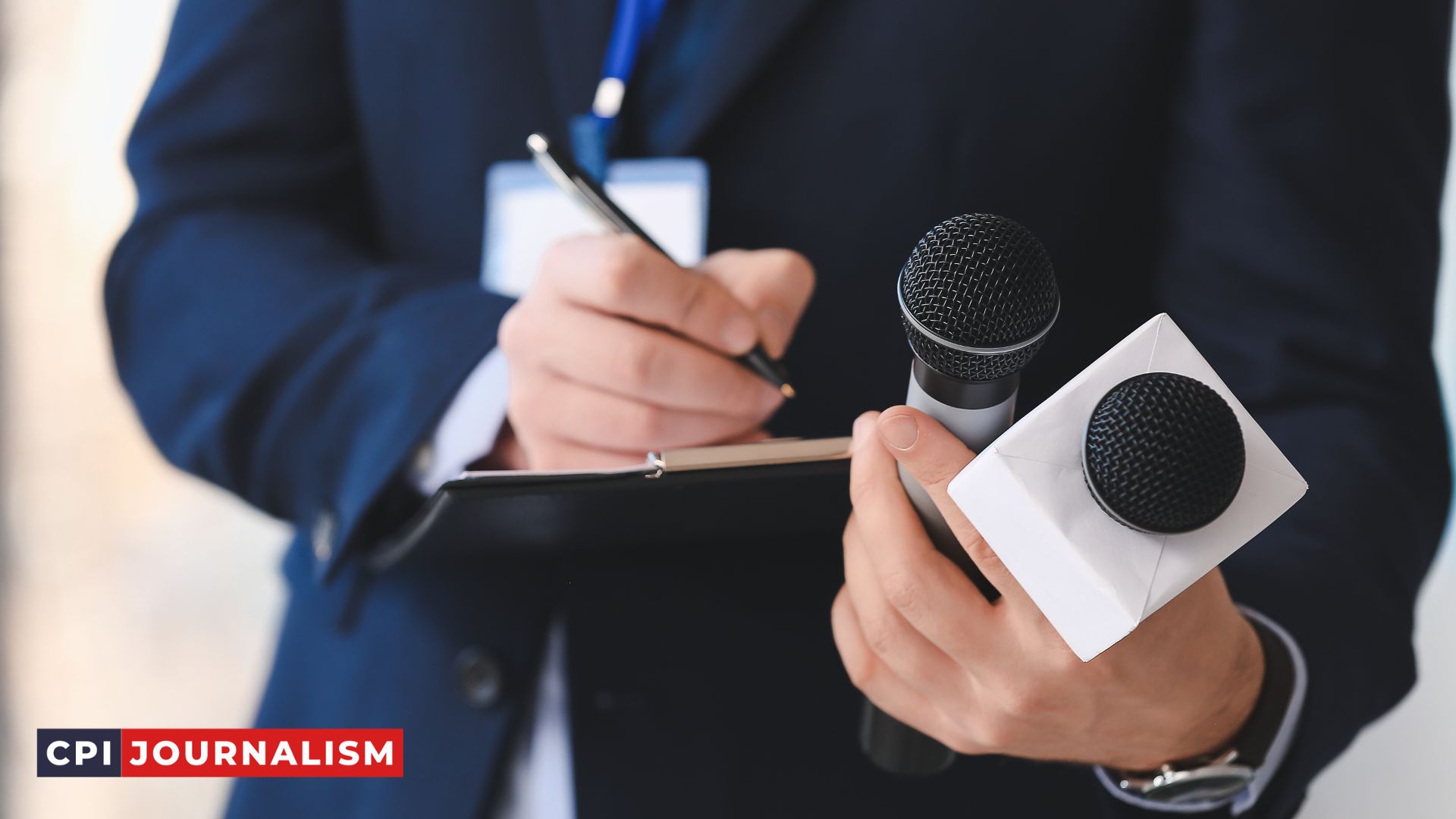
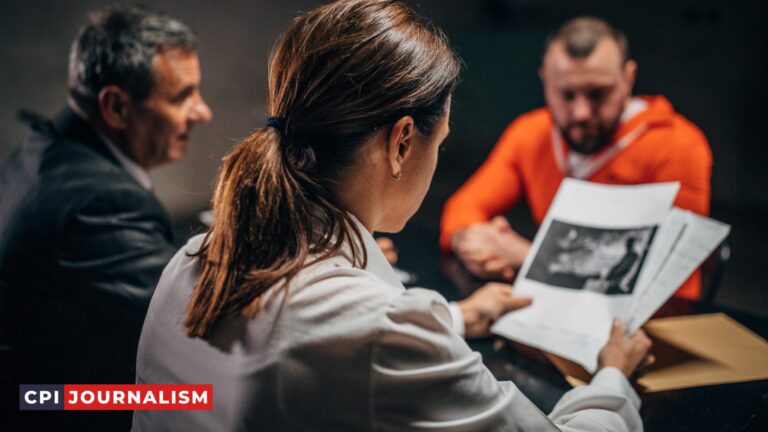

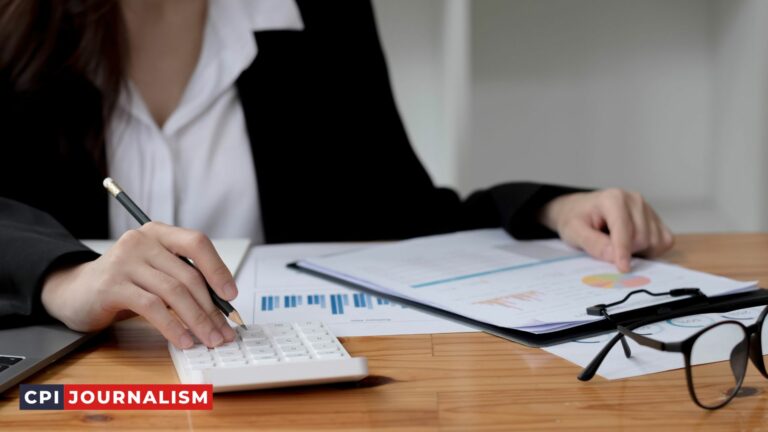

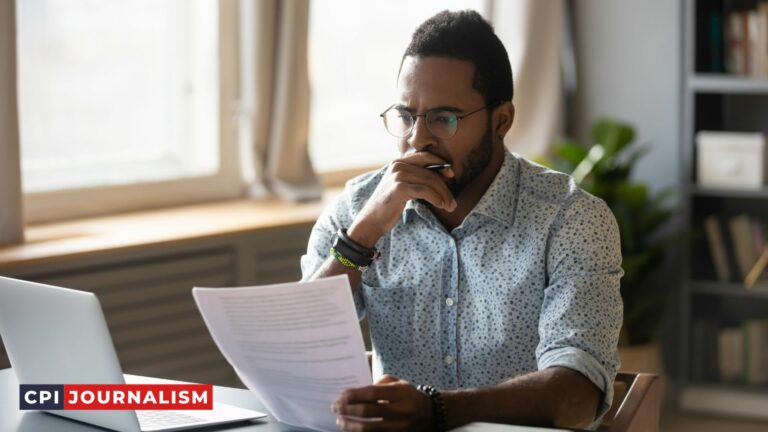

I want to be a professional journalist
I like to be a journalist